On Guard!
Pick Guards on C. F. Martin Guitars
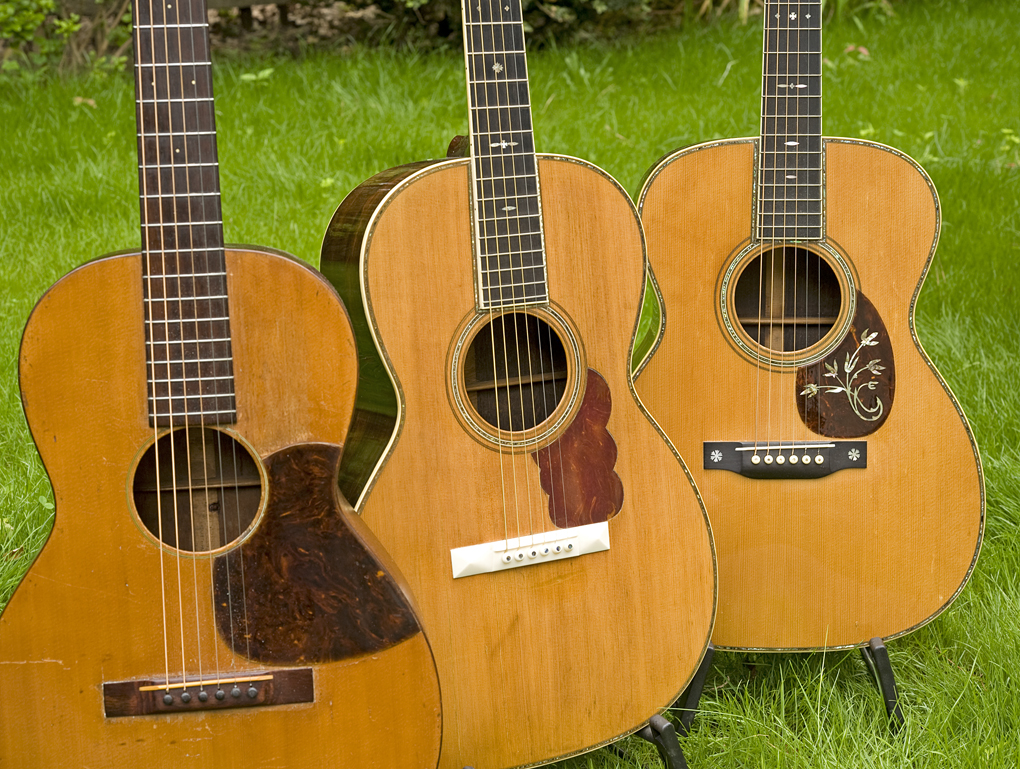
The finer early Martin mandolins had elaborate pick guards of real tortoise shell which were inlaid into the tops of the instruments, as was common on fine 19th century mandolins.
C. F. Martin Style 5 mandolin from 1899
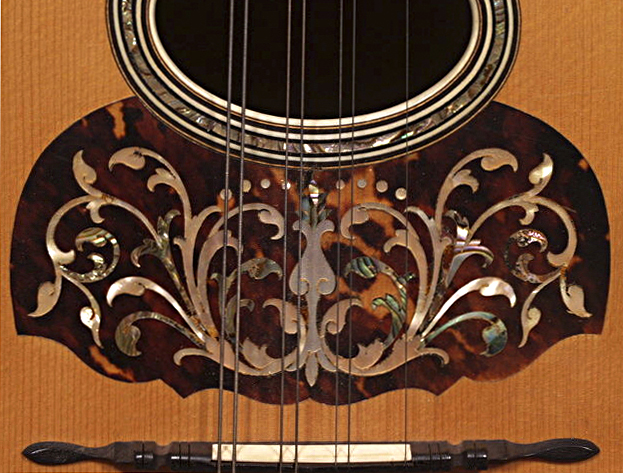
Martin guitars did not come standard with pick guards until late 1929, however, Martin occasionally put pick guards on their guitars on special order.
As with the mandolins, the guards on early Martin guitars were often inlaid into the top.
This 000-42 was a special ordered from the Ditson Company in 1918 with a cloud shaped guard inlaid into the top.

This 1924 Ditson 111 also had a custom guard inlaid into the top.
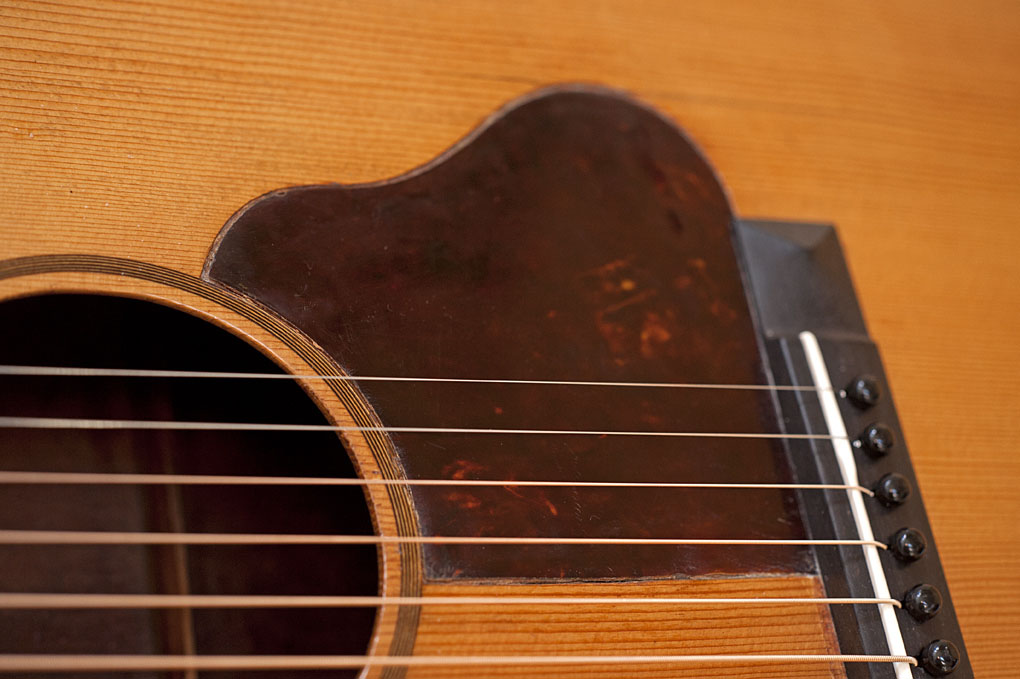
The pickguard was formally introduced on the OM-28 in a small form that is traditionally referred to as the "teardrop" pickguard.
The reddish guard with large swirls on this OM-28 is one of several styles appearing from 1929 to 1939.
1930 OM-28

The early OM-18, OM-18P, and 0-18T had a deep blood red pickguard that is distinctly different from the more figured guard Martin was using at the time on the OM-28.
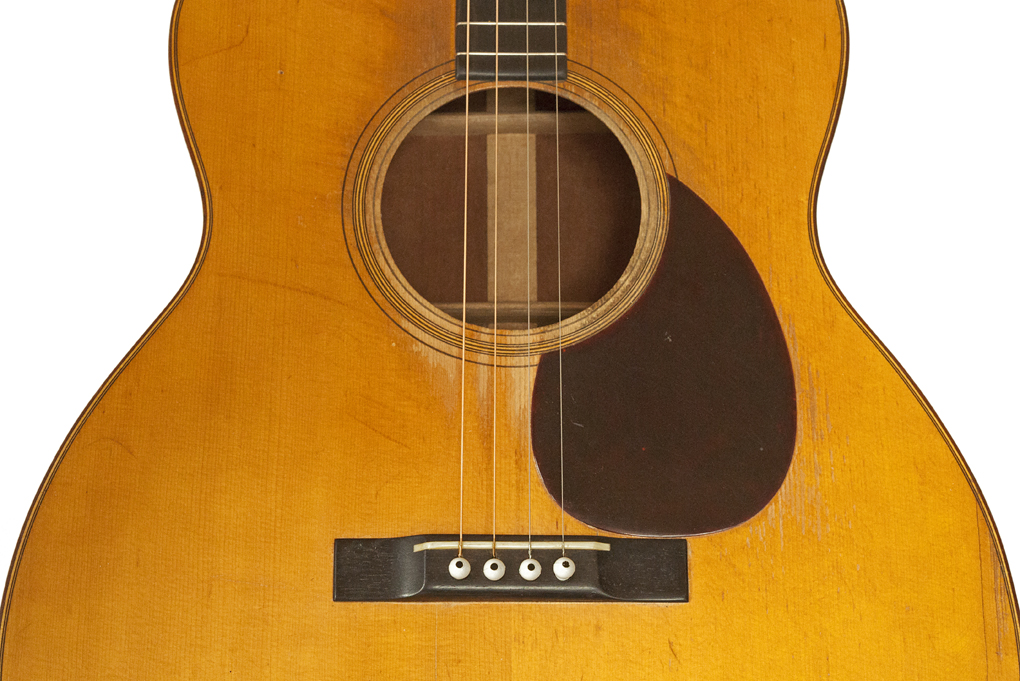
The Martin OM-18, 18P, and OM-28 were joined in 1930 by the OM-45 and OM-45 DeLuxe. The DeLuxe is the only catalogued vintage Martin to sport an inlaid pickguard, reminiscent of the early mandolins. This was the fanciest and most expensive production Martin guitar ever, and no more than a dozen examples of this model were made in the short time before the model was discontinued.
The 1930 Martin OM-28 and OM-45 DeLuxe

1930 Martin OM-45 DeLuxe

A number of Martins from 1928 and 1929 have what appear to be original pickguards, as well as belly bridges, a style of bridge that was not introduced until 1930. These guitars remained unsold at the factory, with serial numbers, but unfinished, or "in the white", due to the financial hardship of the Great Depression. So Martin "improved" these instruments before they left the factory by adding the latest features. Martin also requested that dealers return unsold guitars to Martin to be upgraded, perhaps one of the earliest examples of a "factory recall".
Another shade of pickguard, used concurrently, was the brownish guard, as seen on this tenor guitar, which appeared in lighter and darker versions.
1931
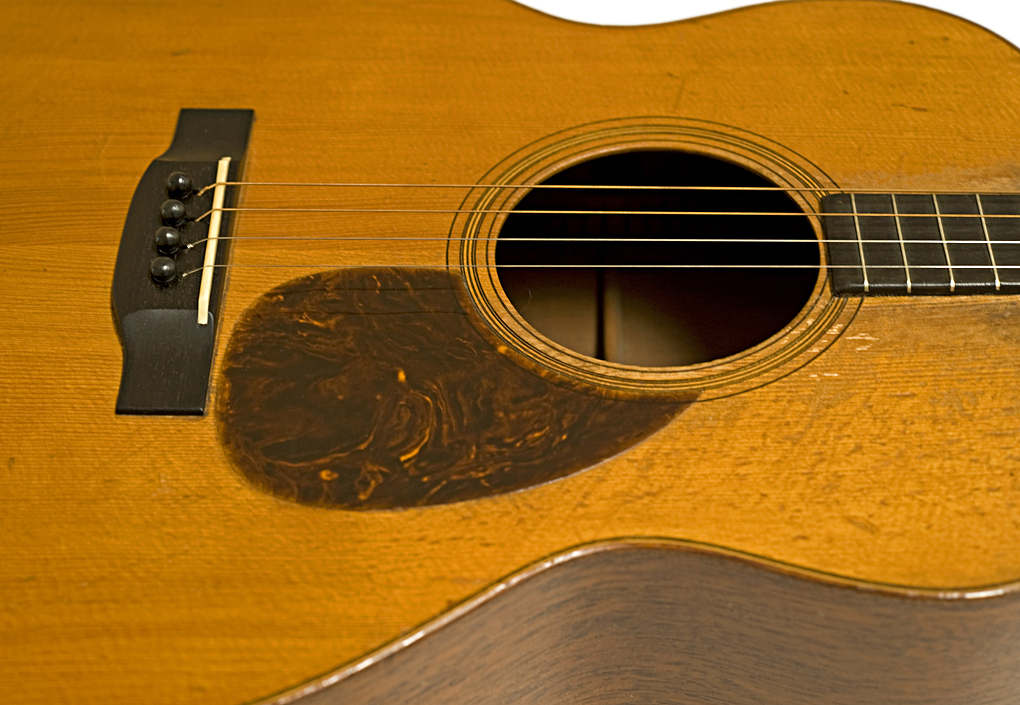
At about the same time as Martin formally introduced the pickguard as standard, other forms of the pickguards appeared on Martin guitars made for other companies on special order, including the 0-17S, a spruce top variation of the 0-17 made for the Montgomery Wards Stores.
1930 Montgomery Wards 0-17S
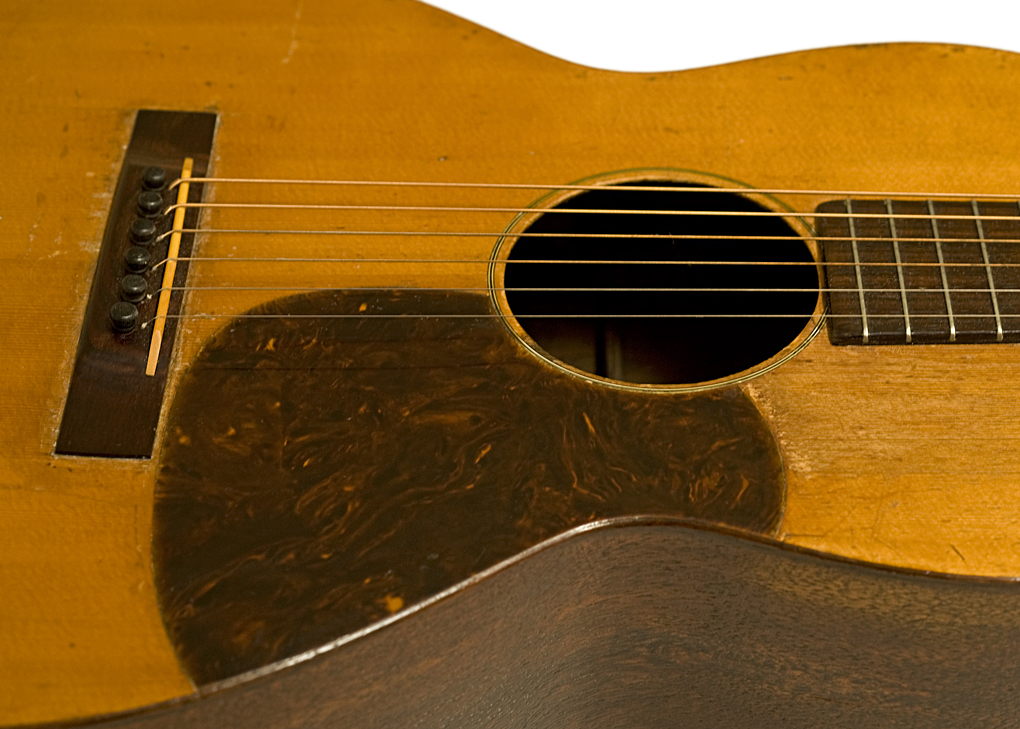
The larger form of the standard Martin pickguard was introduced in 1933.
While somewhat similarly shaped pickguards are referred to as "teardrop pickguards" on Gibson guitars, traditionally, only the smaller early form has been referred to as the "teardrop" on Martin guitars. In recent years, the term has been used more frequently to refer to the larger Martin guards as well.
1932
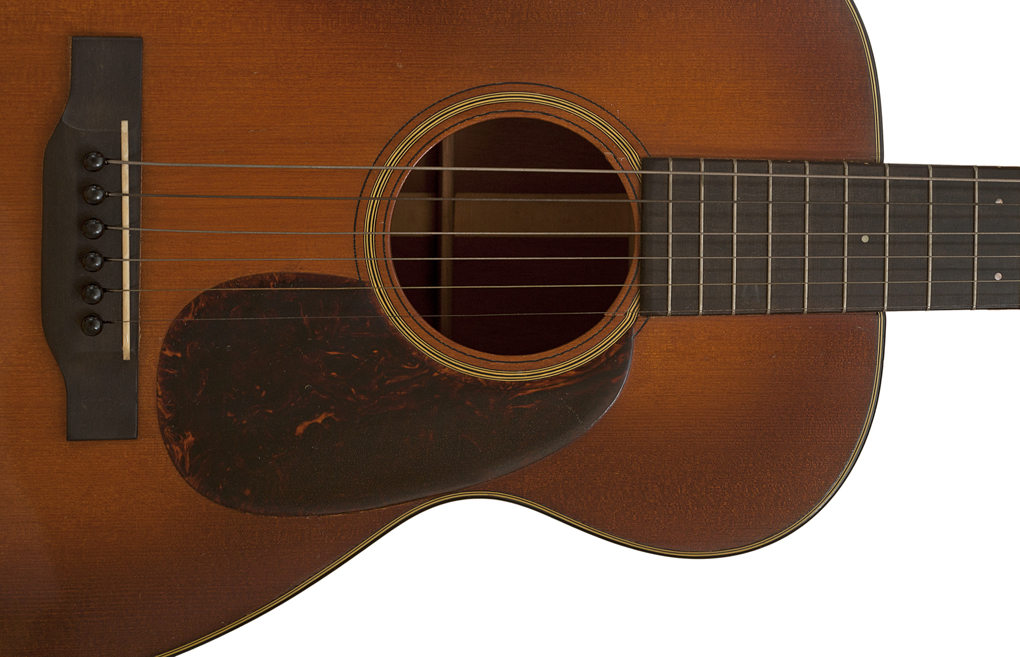
1933 OM-18
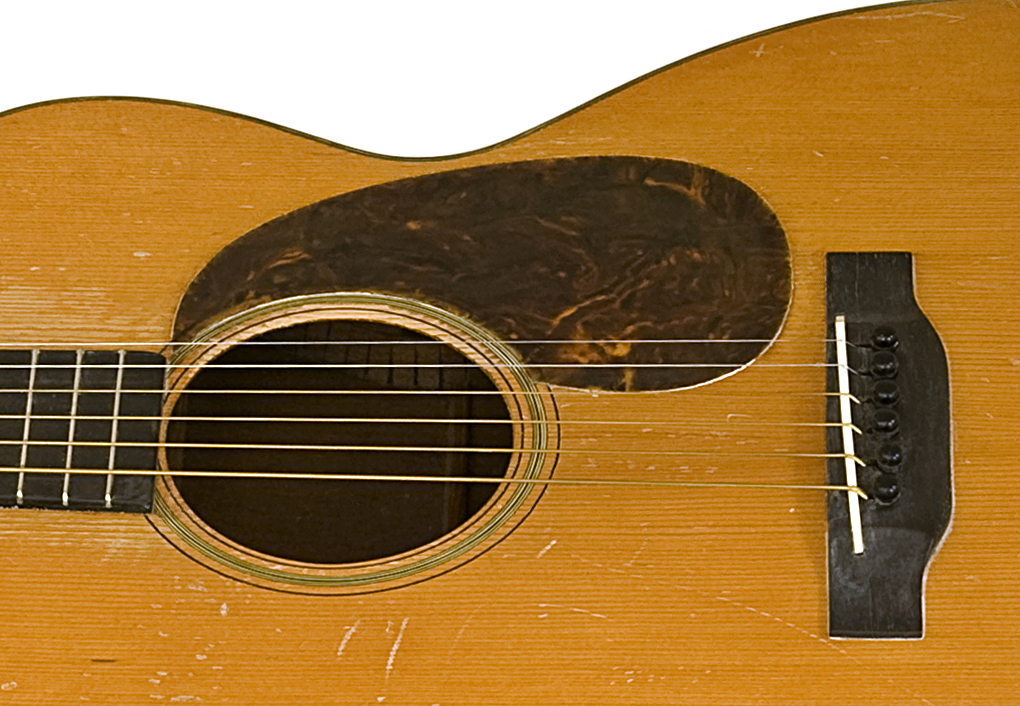
Here's a larger guard in the lighter, more reddish style which appeared from 1929 to 1939.
1934 00-40H
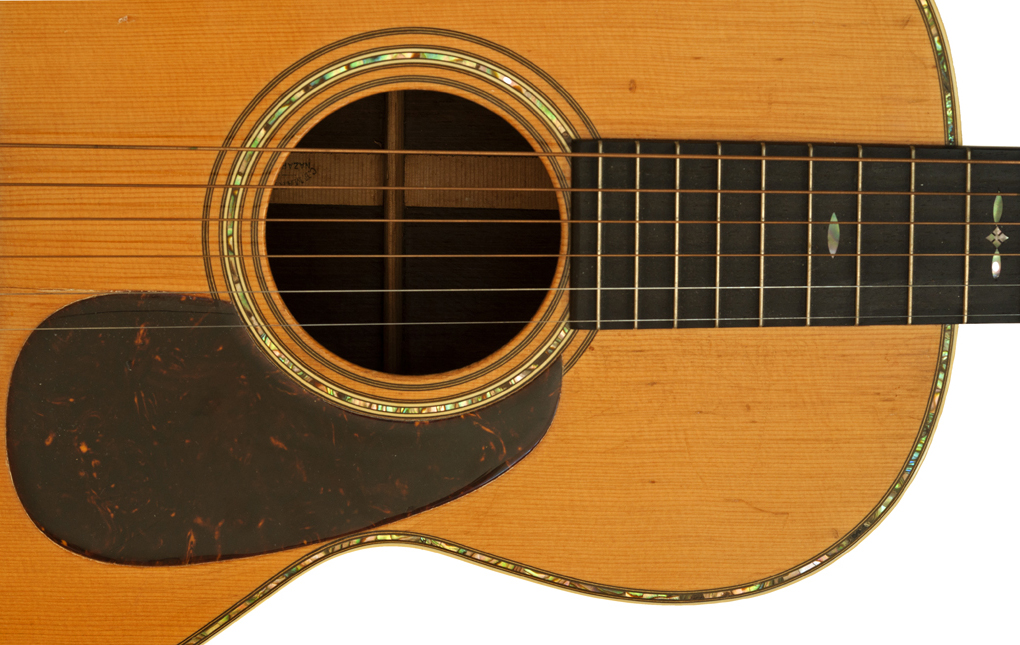
These darker brown guards were also used from 1929 through mid-1939.
1935 00-17
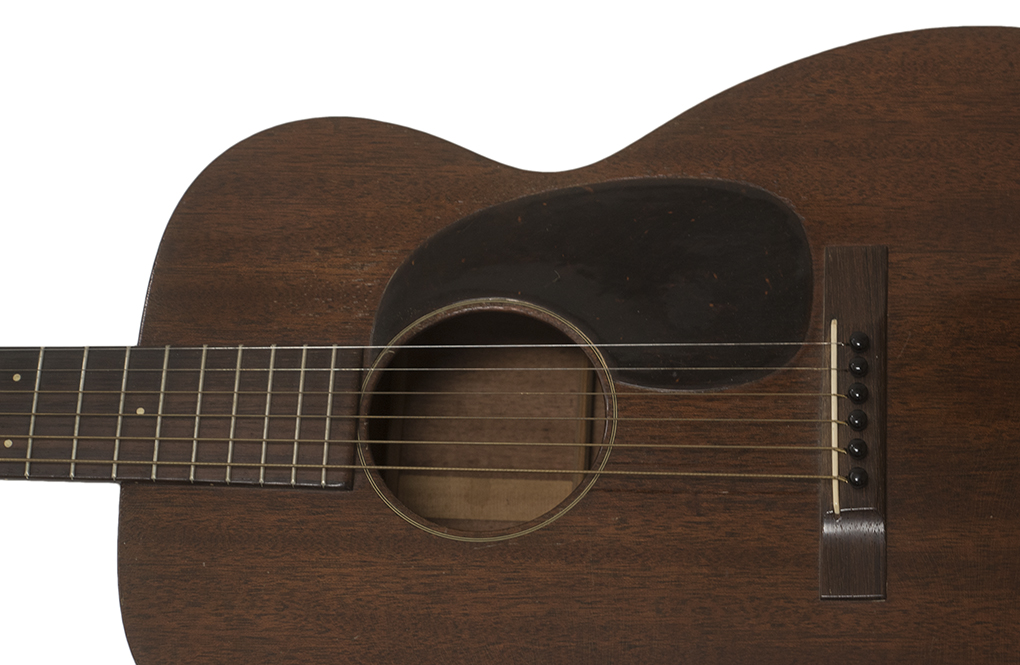
1936
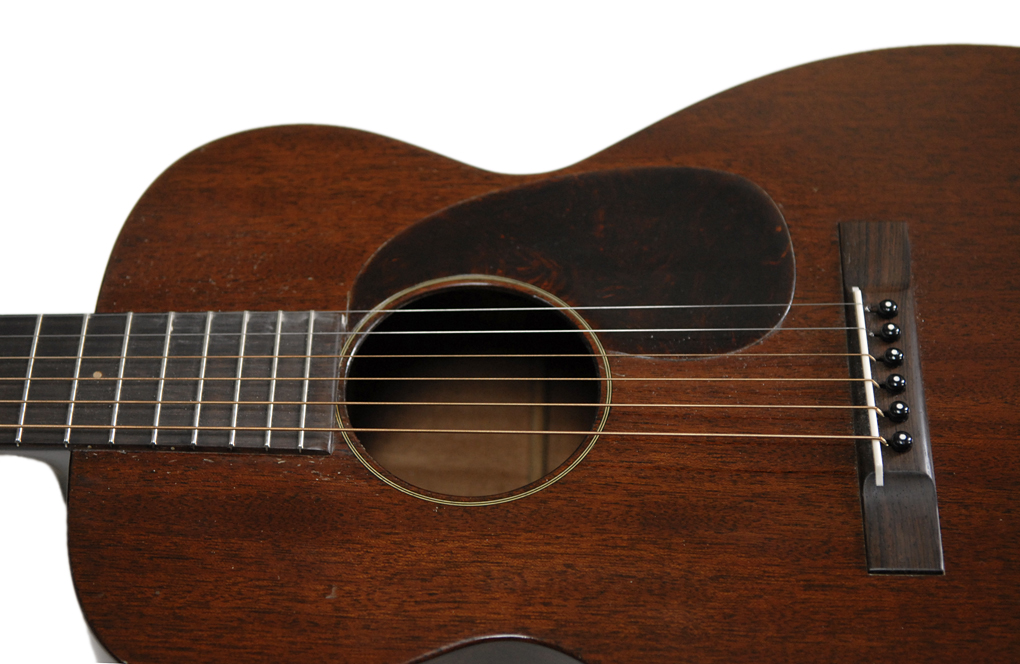
This 1937 has a lighter brown pickguard with clearer windows.
1937
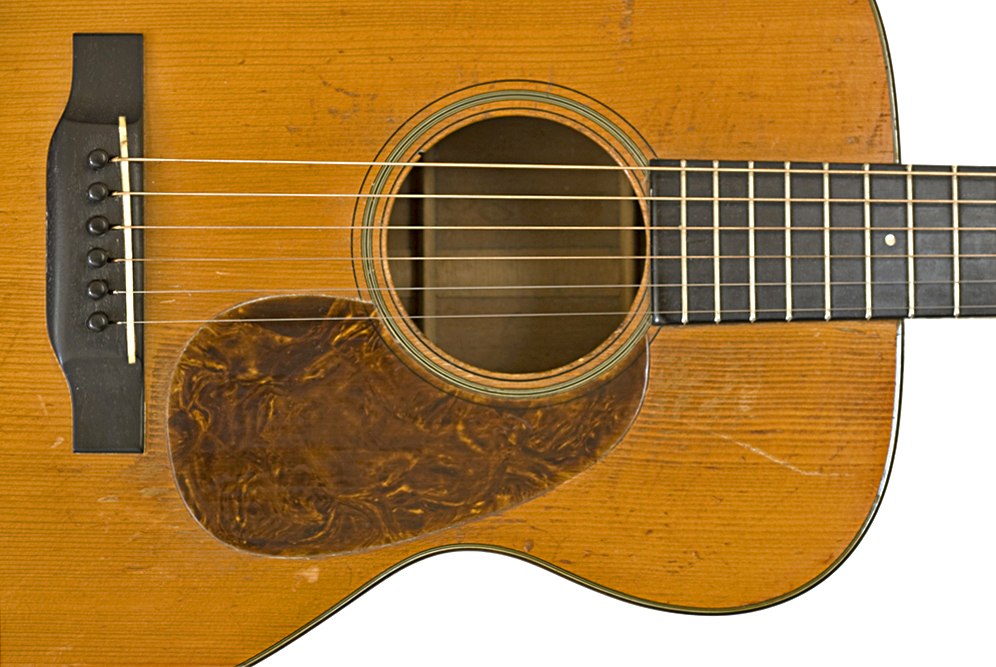
1939

In mid-1939, this reddish guard with swirls appeared. These look suspiciously like Martin pickguards from the 1960's, which leads many people to mistakenly assume these to be '60's era replacements, but they were made in 1939 and 1940.
1940

1941
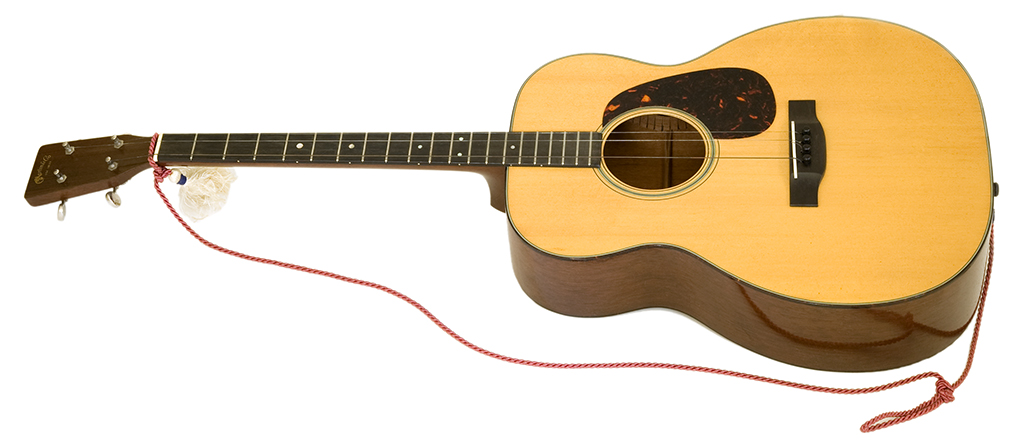
1942
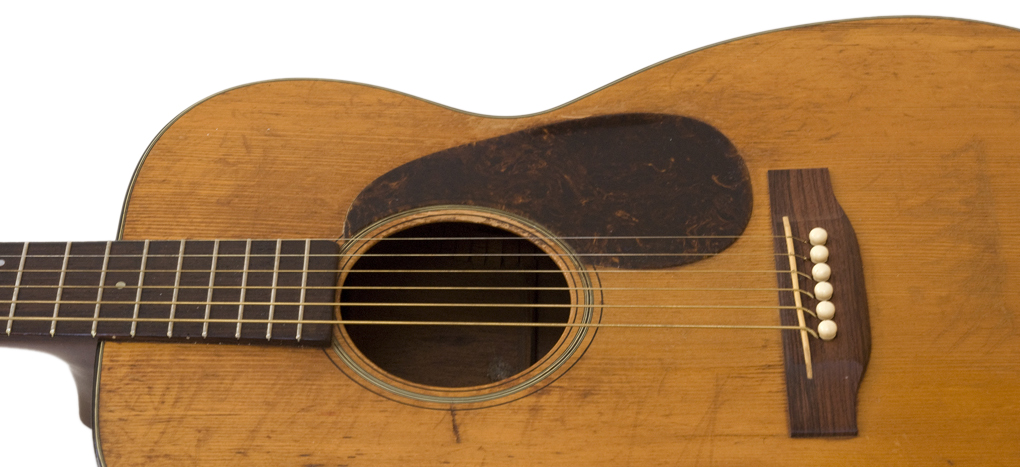
From 1942 to about 1945, a distinct dark brown guard with small clear windows appears.
1943

1944
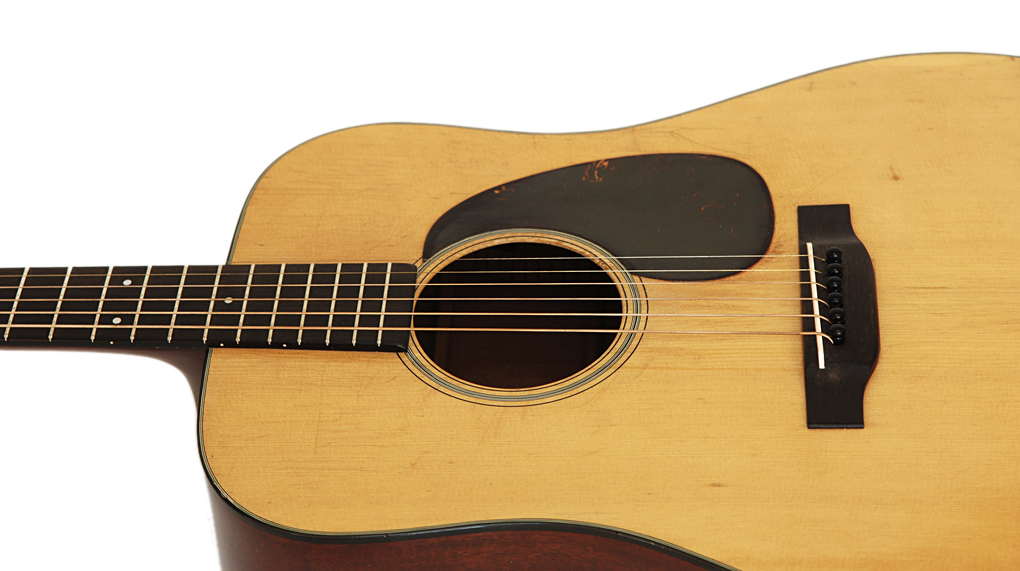
This was followed by a period of various darker, brownish red pickguards with more consistent swirls.
1945

1946

1948
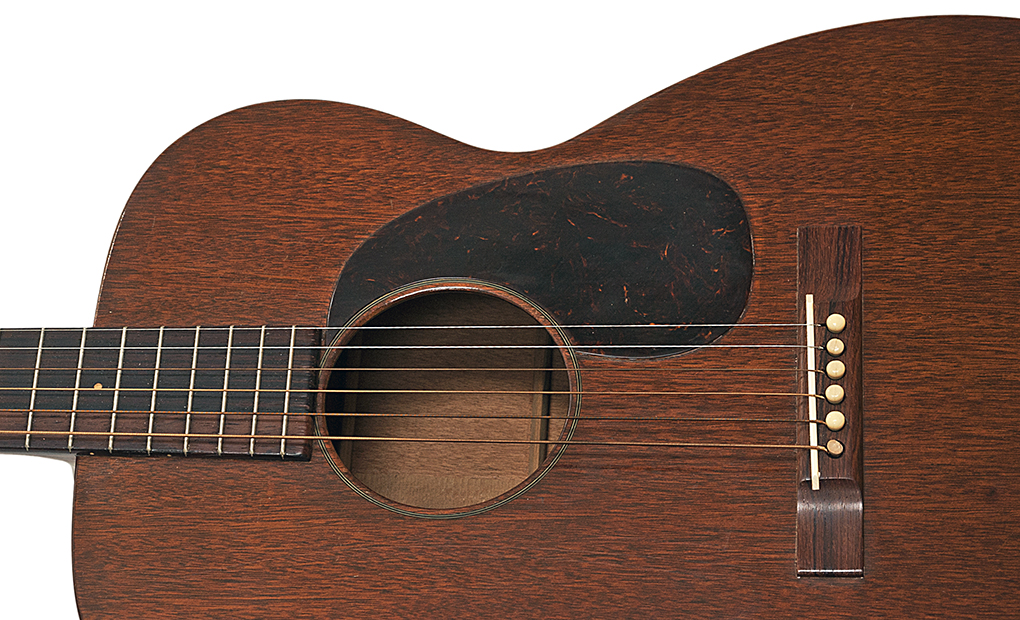
In the early 1950's, when bluegrass was taking hold, and the danger of pickwear from flatpicks was a concern, Martin built guitars with larger pickguards on request.
1951
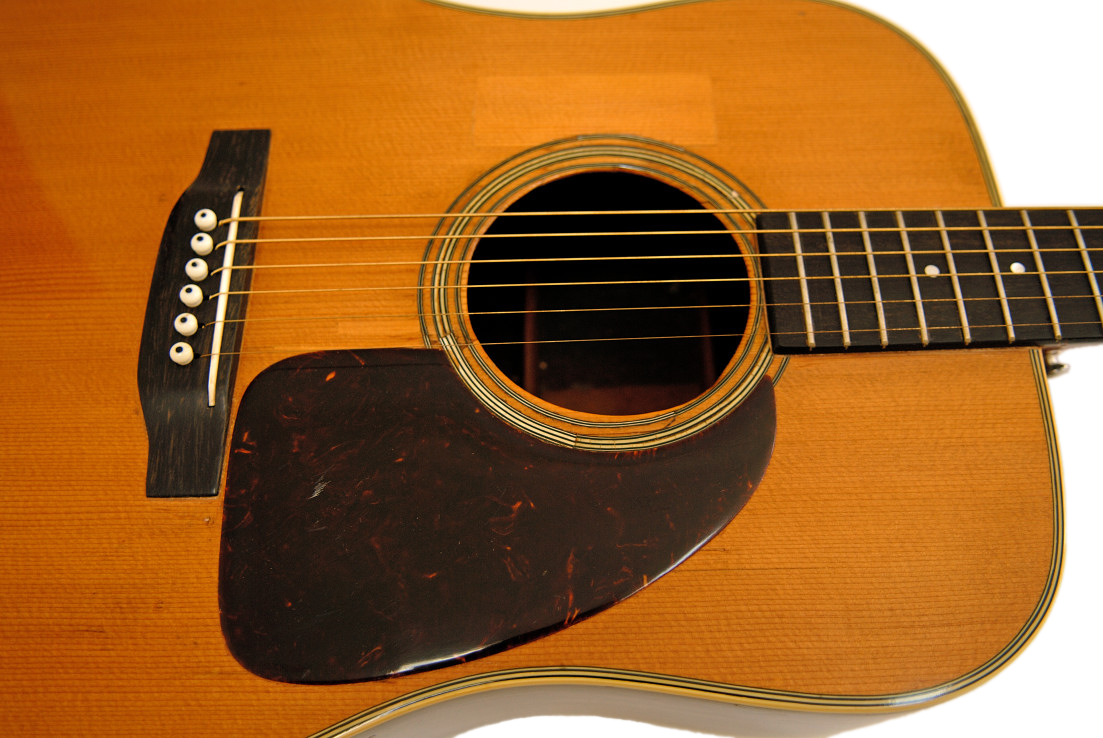
1952

It's interesting that this early to mid-40's style dark brown, small window pickguard reappears at the same time Martin returned for a short period to red spruce. Perhaps Martin felt the reddish guard suited the reddish tone of Sitka Spruce better than it suited the paler, yellower, red spruce. Perhaps the always thrifty Martins were simply using up old stock in this transitional period. Or perhaps there's some truth in both ideas.
1953

A distinct close grain pattern with a bright, orange tone appeared in 1956 and 1957. Always paying attention to detail, on this guitar it's paired with an attractive lighter, blonder tortoise binding.
1956
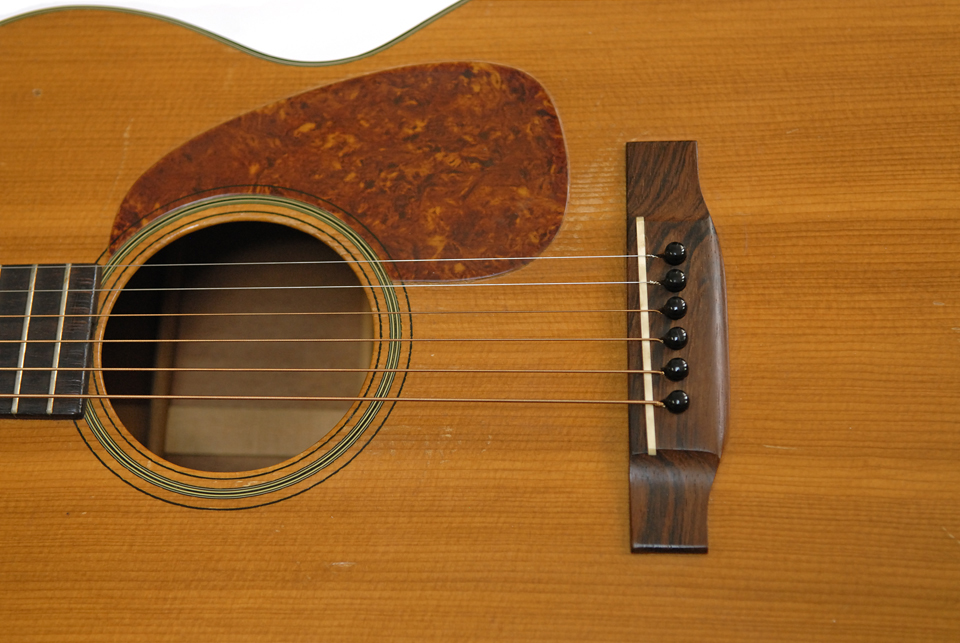
1957

From the late 1950's through 1966, Martin pickguards had large swirl patterns and a distinctly reddish tone.
1962
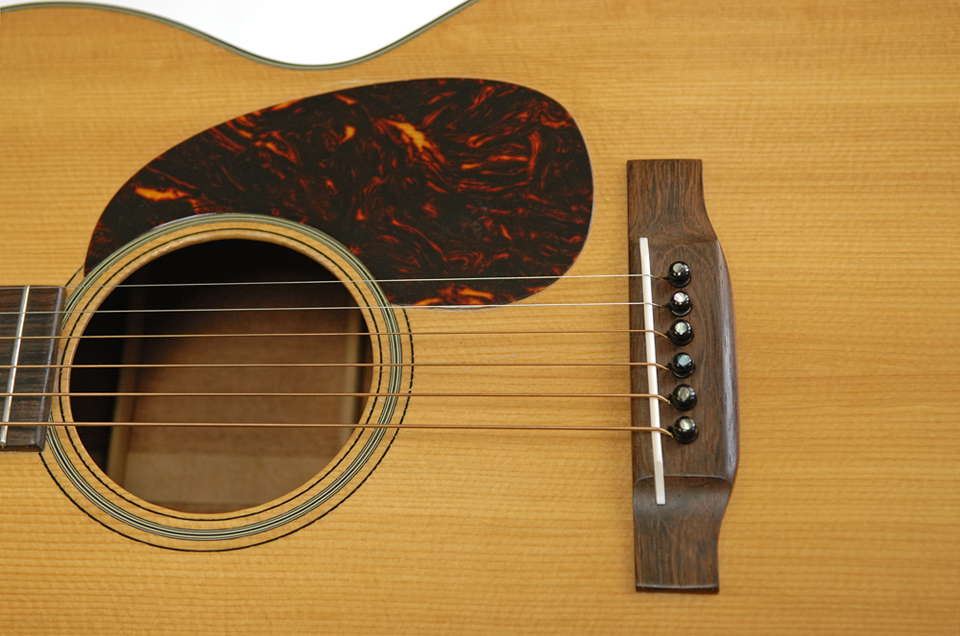
1964

1965
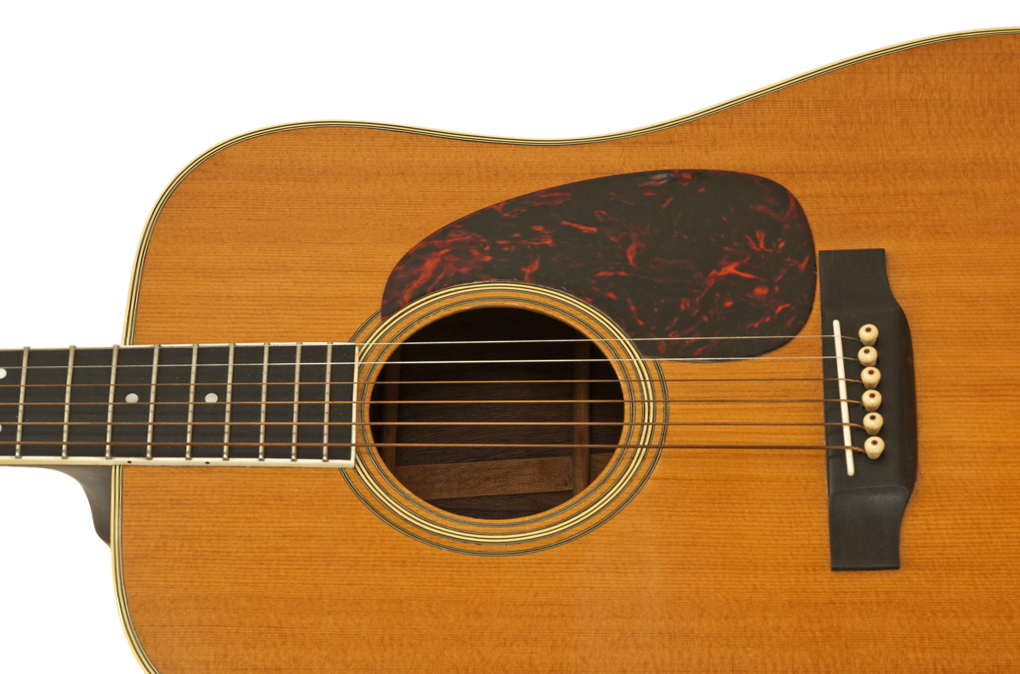
1966

In the beginning of 1967, black acetate pickguards replaced the tortoise pattern nitrate based guards, although some tortoise guards still show up occasionally after this date.
With the introduction of the M-38 in 1977, Martin began using tortoise pattern guards once again.
In 1984, Martin discontinued the practice of applying finish over a pickguard which was glued directly to the top with lacquer finish used as glue.
The pickguard attached directly to the top was responsible for the famous "Martin pickguard crack" which appeared when the pickguard material shrunk at a faster rate than the spruce top.
The newest style Martin guards are a self-adhesive type, supplied with adhesive material on the back of the guard.
Increasingly, Martin has used guards with a visible dot screen tortoise pattern printed on the rear side of an acetate guard.
vintagemartin.com
To See Robert Corwin's Classic Photography of Folk and Roots Musicians, visit:
For Information on Photography for
Exhibition, Publication, CD's, Promotion, Web Pages, Tour Books,
to Purchase Photographic Prints, or
If You Have Questions or Suggestions About This Web Site or Vintage Martin Guitars:
e-mail: Robert Corwinentire site copyright ©1998 through 2017 Robert Corwin/Photo-Arts. All rights reserved.